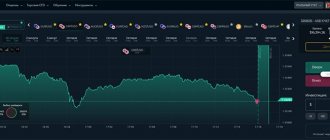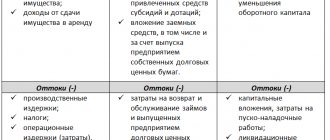ROI, ROMI, ROAS - what are the differences?
ROI is often confused with ROMI, ROMI with ROAS, and vice versa. Let's figure out what the main differences between these indicators are.
ROI (Return on Investment) is the payback ratio or the return on all investments. This indicator helps determine how profitable the entire project is, taking into account all the investments in it. To determine ROI, it is necessary to take into account all the costs of the project and the income from it.
ROMI (Return on Marketing Investment) is an indicator of return on marketing investment. ROMI is most often confused with ROI. If ROI helps determine the return on all investments, then ROMI takes into account only marketing costs: advertising budget, printing, billboard rentals, but does not include the costs of producing the product.
ROAS (Return on Advertising Spend) is the rate of return on advertising costs. ROAS only takes into account marketing expenses for a specific advertising campaign. The main task of the calculation is to find out whether the company makes a profit from the advertising tools used.
How to calculate the return on investment ratio
ROI shows the real profitability of a business solution, so it is usually expressed as a percentage. If the value exceeds 100%, then the profitability of the business is proven, and if it is less than this value, then the invested funds are not returned. The following indicators are used to calculate ROI:
- The cost of a product or service, consisting of all production costs: purchase of materials, logistics costs, wages to company employees;
- Total income without deduction of cost;
- Income representing the final profit after the sale of a specific product or service;
- The amount of investment consisting of all cost items allocated to a specific business. Investments can be assets, capital, business principal, and other investments.
The listed indicators are used for a formula, the simplest version of which is as follows: ROI = (total income - cost) / total investment * 100% As a result, if the value is below 100%, then the investment does not pay off, and if it is higher, then the business brings profit. Return On Investment analysis is usually calculated every month in order to, based on the data obtained, draw conclusions regarding the profitability of the invested project, understand which goods or services have the highest margin, redistribute the budget and increase the return on investments.
Using Return On Investment analysis, you can calculate the return on most investments. However, there are some restrictions. For example, if you look at the ROI of marketing initiatives, you might look at the following marketing functions: direct marketing, sales promotion, loyalty programs, and other marketing activities that are short-term and do not overlap in time and effort with other initiatives where sales data can be obtained for a certain period of time.
ROIC is an indicator that reflects a company's past performance and is expressed as the ratio of a company's net operating income to the average annual amount of total invested capital. For potential investors, ROIC is important because it determines the return on investment before making business financing decisions.
The formula for calculating the indicator is as follows: ROIC = ((net profit interest * (1 - tax rate)) / (long-term loans equity capital)) * 100%Or: ROIC = (EBIT * (1 - tax rate) / (long-term loans equity)) * 100% To clarify: net operating income is considered net of adjusted taxes (NOPLAT).
Invested capital in total is current assets in core activities, net fixed assets and other net assets (less non-interest bearing liabilities). When calculating ROIC, you should use data from annual or quarterly earnings reports.
ROIC is used as an indicator to indicate a company's ability to generate added value relative to other companies. A relatively high ROIC level is seen as evidence of strong management. But at the same time, high levels of this ratio may indicate that management is focused solely on squeezing out profits, ignoring growth opportunities and destroying the company's value in the long term. Therefore, ROIC is an indirect measure of a company's value. Its positive growth rate directly affects the growth of stock prices.
1) It is impossible to calculate how the income was received. When calculating the ratio, there is no difference between constant profit from operating activities or one-time income that could arise as a result of external market circumstances. 2) Possibility of manipulation of the indicator by management. 3) Subject to influence from accounting policies, and may change as they change. 4) Subject to the influence of inflation and changes in exchange rates.
What is a good ROI?
ROI is a ratio metric that is not indicative in isolation from the context. Because you can get a big ROI with a small business profit. Without knowing real income and expenses, relying only on ROI, you cannot say that you are getting maximum profit.
If you sell as much product as possible and make the maximum profit (we do not take into account price increases), then it is time to optimize your channels as much as possible and increase your ROI. If not, you first need to reach this maximum point, that is, invest in expanding the sales market. Accordingly, spend more money on advertising and slightly reduce ROI.
Let's take the situation as an example.
We have two campaigns. The product is the same - for example, the same cups. In the first case, the ROI is much higher - 105%. It would seem that this campaign is more successful. But thanks to the second campaign, more units of goods were sold and the profit was almost twice as large.
Let’s assume that the maximum flower pots you can produce at your current capacity per month is 50. But you won’t be able to sell that many, and the goods will remain in the warehouse. You can invest in advertising more and more until you sell those 50 pots, provided the ROI is > 100% and the campaigns are not unprofitable. Once you've reached this maximum, you can optimize your ad spend and increase your ROI.
When to calculate ROI?
You need to understand that ROI is a metric that directly indicates action. Such metrics are also called actionable metrics. There are metrics that you can look at and be happy or, on the contrary, be upset, but they do not show what exactly is wrong and what needs to be changed (for example, churn rate or the number of subscribers). Actionable metrics show exactly what needs to be changed.
ROI is not a conversion formula; it is not calculated in the background. ROI is calculated when some management decision needs to be made. For example, if you need to choose whether to purchase equipment or raw materials, remove or leave an advertising channel, kill the loyalty program or give it the right to exist.
When calculating, you need to take a period of time when nothing has changed globally in the advertising campaign, method of distribution or production.
Is it possible to do without calculating ROI?
In business you cannot act at random. Therefore, there is no way to do without calculating ROI if you want your investments to pay off and serve as a springboard for profit.
The profitability ratio cannot be calculated in advance. You need to work for some time so that data appears to compare income with expenses, and make the appropriate calculations.
Return on Investment data will help you make the management decision necessary in specific conditions, find out the percentage of net profit, avoid mistakes in further business development planning and prevent operating at a loss.
How to calculate ROI: in Excel or online?
When calculating the ROI coefficient, there is a possibility of getting confused or not taking into account important indicators. In order not to miss anything and spend a minimum of time on calculations, there are several ways to calculate ROI automatically: using excel tables or special calculation services.
Checkroi allows you to calculate not only ROI, but also other marketing indicators.
Ciox is a standard calculator with all the necessary variables.
You can use a table in Excel and store all previous calculations there. Download a ready-made template for calculating ROI:
Download a template for calculating ROI and other key marketing metrics
Thank you! We have already sent everything by email
The difference between ROI and DRR
DRR is the share of advertising costs or CRR (Cost Revenue Ratio). DRR is similar to ROAS and shows the ratio of advertising costs to advertising revenue. Calculating the formula helps determine what percentage of the income received is the cost of spending on an advertising campaign.
Formula for calculating DRR:
ARR = Advertising Cost/Advertising Profit * 100%
Let's return to the mugs. We spent 5,740 on advertising cups, and earned 6,400 from it (8 mugs for 800 rubles).
DRR cups: 5740 / 6400 * 100% = 89.6%
This means that we spend 89.6% of our cup revenue on advertising.
The DRR indicator, in contrast to ROI, allows you to determine the share of advertising expenses from the revenue from them. Using this indicator, we can also draw conclusions about the profitability of a project or advertising campaign. The DRR should not be higher than 100%, otherwise the advertising company will be considered unprofitable.
Example of ROI calculation
For example, a company sells office supplies and advertises its activities in a local newspaper and on a radio station. 100 thousand rubles per year are spent on an advertising campaign. When a new client applies, they ask him about the sources from which he received information about the company. If from the radio or newspaper, the total cost of his purchases is entered into a special account.
ROI = Money Earned / Costs * 100% = 300,000 / 100,000 * 100% = 300%
Consequently, every ruble spent on advertising brought the company 3 rubles of profit.
Of course, NPV remains the most important indicator for deciding to launch an investment project. But for deeply developed conclusions, not only net present value, but also internal rate of return, profitability index and discounted payback period are not enough. Some additional assessment, albeit less complex, is required.
- discount rate of return;
- estimated income level;
- simple rate of return;
- investment efficiency ratio;
- average rate of return.
The last two formulations are used to a greater extent in the domestic practice of investment analysis. In order to obtain the average profitability value, the indicator is determined as the average accounting profitability of the book value of the planned investment. This parameter does not take into account discounting mechanisms and is calculated by dividing the average net income for the billing period by the average investment. First, let's look at the formula for calculating the criterion from the perspective of the Western management school.
Suppose an investor is considering a decision to invest in the creation of a fleet of trucks in the amount of 75,000,000 rubles. The estimated period of the project is 7 years. Expected revenues from the implementation of the production program for the operation of rolling stock are planned at the level of 21,000,000 rubles annually.
An example of calculating the average rate of return using a formula in the interpretation of the Western school
From the perspective of domestic investment analysis practice, the average rate of return is calculated from a slightly different perspective, but the essence of the indicator is the same. The average annual net profit from the implementation of the project is compared with the average investment value, taking into account the liquidation value of the object.
The expected rate of return from the perspective of economic content illustrates how much net profit will be generated on average per project per ruble of completed investments. To simplify calculations, depreciation of investments is taken into account through the use of an averaging fraction of ½. The formula for calculating the indicator itself is as follows.
Investment efficiency ratio formula
I calculated the ROI. What's next?
If we are talking about paid advertising, adjust advertising campaigns, disable ineffective ones, reduce or increase the advertising budget in order to expand the sales market without ineffective costs.
If we are talking about other expenses, analyze what can be used to increase efficiency or, conversely, what else is worth spending on.
Experiment. Test new ideas. Launch new campaigns. Correct your course as soon as you see that you are moving in the wrong direction.
The main value of ROI is that timely calculation of this formula allows you to make cheap mistakes. So make mistakes to learn and find the right path.
The most frequently asked questions - let's summarize
What is ROI?
ROI is the return on investment or, in other words, the return on investment in a business. Calculating ROI is necessary when we need to know the profitability of a project or evaluate the effectiveness of a team. Expenses for employee salaries, renting premises, purchasing raw materials, purchasing software and subscribing to services necessary for work are all business investments that need to be taken into account in the calculations.
How to calculate ROI?
If we calculate ROI for an advertising campaign or project, we take income only from these projects. Expenses include the costs directly for the project/campaign whose payback you want to calculate. If we calculate the profitability of a marketing campaign, that is, ROMI, then we only include the costs of this campaign - for example, printing and billboard rentals - but do not include the costs of producing the product.
The calculation results are expressed as percentages.
ROI calculation formula
ROI Formula
ROI = PE / I * 100%
where PE is the net present value for the period of interest to us, AND is the investment made during the same period.
PE = Total profit - Cost
The limit value of the indicator is 100%. If the index is greater than or equal to this value, the project can be considered successful and profitable, less than 100% - unprofitable.
In some sources you can find an alternative designation for the return on investment index - PI (Profitability Index).
The indicator is convenient to use to assess the feasibility of a project at its initial stage.
The formulas invented by wise people for calculating return on investment are effective in most cases, and, surprisingly, they work for different areas of activity. In order to obtain the most accurate result, it is necessary to take into account the following fundamental points:
- Proposed, pre-calculated profitability;
- The period according to which the project will pay off;
- Investment amount;
- Risks and costs that fall on the shoulders of the investor.
Mathematicians and economists have long developed many formulas that simplify our lives. Of course, I still don’t know where the formula for calculating the discriminant that was discussed in school will be useful to me, but the ROI formula is a good helper for both experienced and newbies in investing. Interestingly, the history of this investment valuation comes from the Western world;
- Total income;
- Project cost;
- Amount of investment. Net income is calculated simply: the cost is subtracted from the total income, and then everything is divided by the amount of investment. To get the percentage, multiply by 100%.
A preliminary guided calculation of the ROI coefficient allows you to minimize risks, both in bank deposits, the Forex market, and cryptocurrency investment projects.
From my own experience, I would definitely add a column to the general analytical table - weight in the overall portfolio. It is extremely important to understand that the ROI is 30%, but the specific amount of this particular investment is only a quarter of the total working capital. And when you work with several investments in parallel, it is convenient to understand how much profitability affects the overall profit.
Speaking about the effectiveness of the formula, it is worth paying attention to the fact that although it includes fundamentally important aspects of profitability and takes into account the nature of investments, it misses important points, in particular:
- Inflation rate at the time of investment and completion of the deposit or other type of deposit;
- Non-trading and trading risks are not taken into account;
- And what I said above, the share in the total portfolio is not indicated - what is the specific weight of this or that investment.
ROI – return on investment – a comprehensive indicator of return on investment. Often called ROR - rate of return. Using the indicator, you can estimate in advance the profitability of not only investments in cryptocurrency or an online project, but also in a start-up, your own business, an advertising or marketing campaign. And I would like to immediately draw your attention, dear readers, to the fact that the coefficient changes over time, so you cannot calculate it once and enjoy the result; it is important to periodically carry out control and additional calculations.
If the project has already almost been completed and worked, you can evaluate how successful the investment was using this type of formula: To the profit received, we add the difference between the cost of sale and acquisition, divide everything by the cost of acquisition and traditionally multiply by 100%. If the ROI is 10, this means that breakeven is still far away, because an indicator of 100 directly demonstrates that the stage of “recovering investments” has been passed, and now the money works only exclusively for profit from above.
This indicator is also extremely important, since the success of a particular project or our investments depends on it. The profitability index offers choice and provides alternative choices.
Advice: If PI is less than 1, then the project is not even worth considering in the long term, if 1, consider all financial factors in more detail, and if more, there is a good prospect of income.
In order to calculate this index (in fact, this is done by the analytics department of any company), it is worth dividing the net present value by the amount of your investment in the project. But calculating net worth is, to put it mildly, complicated and a little time-consuming. Essentially, net present value is the mathematical sum of the cash flow for a given year, divided by the sum of the unit and the discount rate to a power that equals the time period of the operation.
And to get an accurate result, you need to take away your share in the project. If almost all the indicators are familiar to us, then I would like to clarify that the discount rate is essentially the cost that the investor is willing to pay for the costs of working in the project, and it is logical that it should be lower than the expected profit.
A preliminary assessment of the coefficient is important for investments when you are thinking about where to invest rubles or foreign currency, and also does not lose its effectiveness when working with cryptocurrency, including trading on any global exchange.
Speaking about the main disadvantages of the PI formula, let me clarify that it is not easy, and in fact, it is actually impossible to analyze in advance cash flows that are being reduced for biased reasons. Plus, over long periods of work, the coefficient is even more difficult to calculate and loses its plausibility every year.
Economic analysis is extremely important, both in the case of working with an investment portfolio of 100 dollars, and with the amount increased by a few zeros. Today you can find online profitability calculators on the Internet, and some sites even offer their own proprietary applications. Of course, it is logical and competent to carry out calculations before investing, but we do not always have all the open data on hand, such as the period of work.
By studying investments on the Internet in detail, you can learn the intricacies of choosing a platform, finding a suitable exchange for trading, and get advice on how to choose a platform for passive income with minimal risks. And it is extremely important that you start accounting for future profits from the first day of investment. Traditionally, we wish you the effective operation of your investments, so that all important formulas and coefficients are exclusively as positive as possible.
Profitability is a relative indicator of profitability, the ratio of profit to the indicator from which you want to know the return. If we explain it in layman's terms, then profitability shows us how much profit each ruble invested in and spent by the organization brings to the organization.
R = P / X * 100%,
R - profitability;
P - profit;
X is the indicator whose profitability we consider.
These indicators will be discussed further.
Profitability is expressed as a percentage, so the division result must be multiplied by 100.











